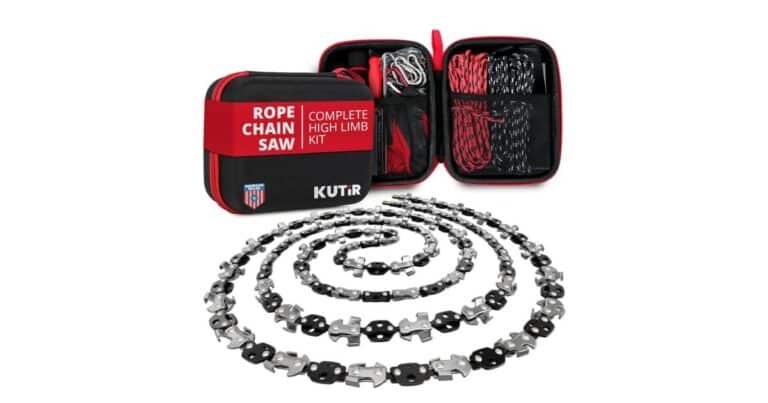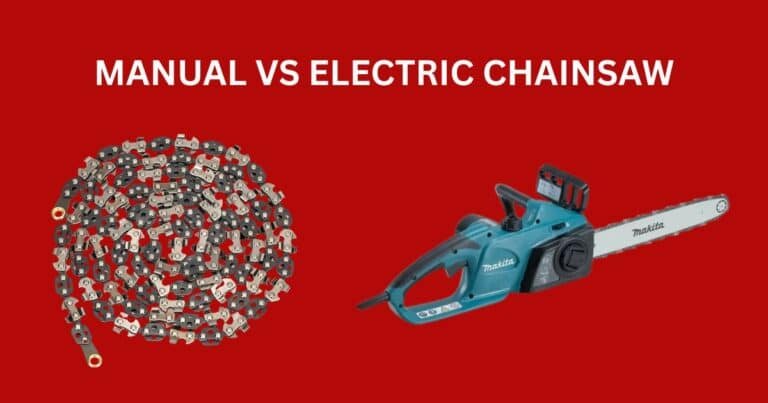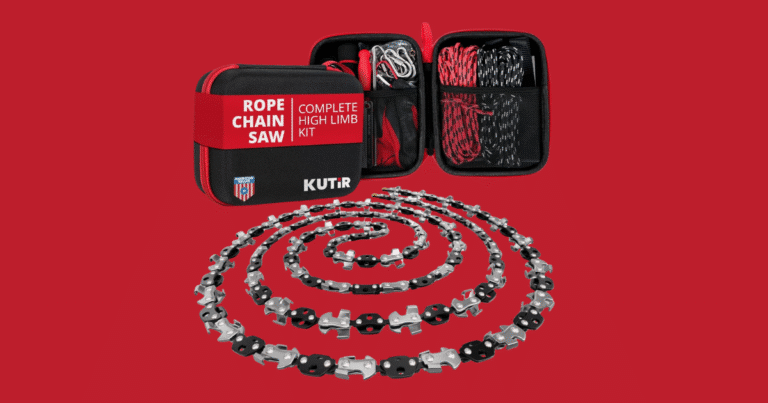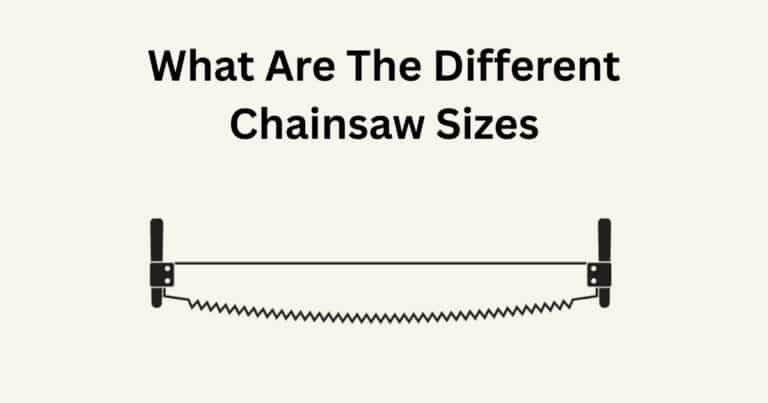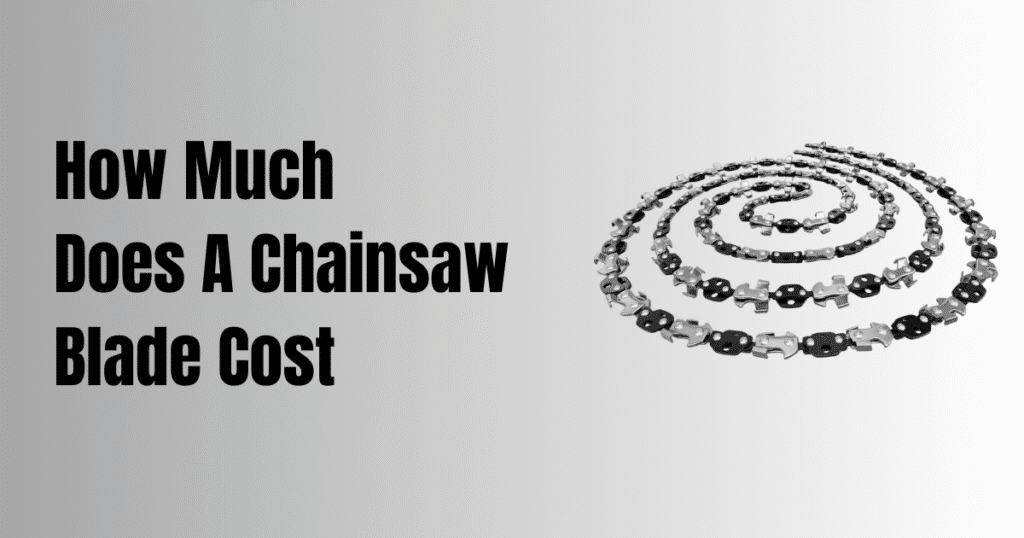
A sharp, reliable chain not only delivers clean cuts but also keeps your work efficient and safe. Chainsaw blades come in different sizes, materials, and styles, each designed for specific jobs. While durability and performance matter most, cost often becomes the deciding factor. Understanding how much a chainsaw blade costs helps you make smarter, long-term decisions.
On average, a chainsaw blade costs between $15 and $50, depending on size, brand, and material quality.
At Kutir Tools, we take pride in delivering premium-quality chainsaw blades that balance durability and affordability. Our blades are crafted for smooth performance, reduced kickback, and long-lasting sharpness.
How Much Does A Chainsaw Blade Cost?
A chainsaw blade usually costs between $15 and $50, depending on brand and quality. When you shop for a new chain, expect most options to fall in that range. Basic homeowner chains often start around $15, while premium or pro-grade versions climb closer to $50.
Specialty chains with features like low-kickback or carbide tips can cost even more. Your choice really depends on how often you use your saw and what kind of wood you cut.
Chainsaw Pricing Examples By Common Lengths
When you choose a chainsaw blade, the length plays a big role in cost.
- 8-inch Chains: If you’re just trimming branches, you’ll likely need this size. Expect $15–$20, which makes it an easy entry point for casual yard work.
- 10–12 inch Chains: Do you own a compact saw for light firewood? Then this is your range. You’ll usually spend $18–$25, perfect for pruning or quick home projects.
- 14–16 inch Chains: Most homeowners land here. If you cut firewood or handle storm cleanup, this size works well. Expect $20–$35, giving you solid performance without breaking the bank.
- 18–20 inch Chains: Have a gas-powered saw for bigger jobs? You’ll likely pay $30–$45. This range gives you the strength for tougher logs and regular outdoor work.
- 24-inch Chains: Running a pro-grade saw for felling trees? Then you’re in this bracket. Prices start near $40 and can reach $60+, built for serious cutting tasks.
Common Factors affecting the price of a chainsaw blade
When you shop for a chainsaw blade, the price doesn’t follow a one-size-fits-all rule. Several key factors come into play, each shifting the cost up or down. Understanding these details helps you know whether you’re paying for real value or just a bigger brand name.
Single vs Multi-Pack Chainsaw Chains
One of the easiest ways to see price differences is by looking at whether you buy one chain at a time or in a bundle. This choice can really change what you spend over the year.
- Single Chains: A single replacement chain is the go-to for casual users. If you only fire up your saw a few weekends a year, this is all you need. You’ll usually pay $20–$35, depending on size. It’s simple, quick, and avoids extra upfront costs. But here’s the catch—if your chain dulls often, those single purchases add up fast.
- Multi-Pack Chains: Buying in a pack makes sense if you cut often or run larger saws. A 2- or 3-pack might cost $40–$80+, but each chain ends up costing closer to $15–$25. That’s real savings over time. Plus, you won’t lose hours hunting for a new chain when one dulls—you’ve already got backups ready.
Gauge and Pitch:
If you’ve ever wondered why two chains that look the same cost differently, it usually comes down to gauge and pitch. These numbers decide how snugly the chain fits and how much metal goes into making it. And yes, more steel often means more dollars. To make it super clear, here’s how the pricing usually breaks down:
| Gauge / Pitch Type | Typical Price Range |
| 3/8″ pitch, .043″–.050″ gauge | $18–$35 |
| .325″ pitch, .050″–.058″ gauge | $25–$40 |
| 3/8″ pitch, .063″ gauge | $35–$55+ |
Material:
The type of material in your chainsaw blade plays a huge role in cost. Think of it this way like basic steel chains are affordable and get the job done, but when you move into specialty metals like carbide, the price jumps fast.
Why? Because tougher materials last longer, cut harder wood, and save you from frequent replacements. Here’s what you can usually expect:
| Material Type | Typical Price Range | Best For |
| Carbon steel | $15–$30 | Light, occasional cutting |
| Hardened / alloy steel | $25–$45 | Regular cutting, tougher wood |
| Stainless steel | $30–$50 | Humid or wet conditions |
| Carbide-tipped | $50–$80+ | Heavy-duty use, frozen/dirty wood |
| Diamond-tipped | $100+ | Concrete or masonry cutting |
Brand:
When shopping for chainsaw blades, the brand name can quickly shift the price tag. Some, like Tiger or Yuri, are known for budget-friendly options, while Oregon and Stihl sit at the higher end for their proven quality.
| Brand | Typical Price Range |
| Kutir Tools | $25 – $40 (Hand chainsaw blades, 48″/72″, free shipping included) |
| Tiger | $5 – $15 |
| Yuri | $8 – $20 |
| Makato | $15 – $25 |
| DCX | $18 – $30 |
| Hi Max | $20 – $35 |
| Golf Ultra | $25 – $40 |
| Sharp-On | $20 – $35 |
| Keil Platinum | $25 – $40 |
| Agripro | $20 – $35 |
| Oregon | $20 – $40 |
| Bosch | $18 – $35 |
Cutter Style
Cutter style is another factor that shapes chainsaw blade pricing. Full-chisel cutters cut fast but cost a bit more since they’re best for heavy-duty work. Semi-chisel cutters are usually cheaper and last longer in dirty or frozen wood. Low-profile cutters sit on the budget side, making them great for casual users.
Is It Better To Sharpen A Chainsaw Blade Or Buy A New One?
Sharpening is almost always the first step, and it’s far cheaper than replacing. A typical sharpening costs just a few dollars or a bit of your time with a file, while a new blade can run $20 to $50, depending on the brand and size. Most chains can be sharpened four to five times before losing performance. However, if the teeth are cracked, uneven, or ground down too far, sharpening won’t restore safety or efficiency. In that case, replacement is the smarter long-term move.
How Long Should A Chainsaw Blade Last?
A well-maintained chainsaw blade can last for years, sometimes even decades, with light use.
In most cases, you can expect hundreds of cutting hours from a quality chain before it needs replacing. Frequent sharpening helps extend its life, especially if you avoid common mistakes like hitting rocks, metal, or frozen wood.
Professional users who cut daily may wear a chain out in a season, while casual homeowners often get five years or more. Proper lubrication and regular care make the biggest difference in longevity.
When to Replace Your Chainsaw Blade
Wondering if it’s finally time to swap your chain? Spotting the signs early saves money and keeps you safe. Here are the clearest indicators that tell you a new blade is due:
- Wear Markers Reached: Every chain has wear markers on the teeth. Once these are gone, the blade loses efficiency and safety drops, replacement is your only option.
- Damaged or Missing Teeth: Hit a rock, nail, or frozen wood? If multiple teeth chip, break, or become uneven, sharpening won’t restore balance. A fresh chain is the smarter choice.
- Worn Sprocket: The sprocket drives your chain, and heavy wear reduces cutting power. If wear marks reach 0.5mm, replace it to avoid damaging both the blade and bar.
- Guide Bar Wear: If the rail grooves become shallow, the chain won’t sit properly. Excess friction means poor performance and faster wear time to change.
Tips for Choosing the Right Chain at the Right Price
Choosing the right chain goes beyond saving money. It ensures safety and better performance every time.
- Always confirm bar length, pitch, and gauge to avoid wasting money on incompatible chains.
- Choose budget-friendly chains for occasional use, but invest in premium options for frequent cutting.
- Select tougher, higher-priced chains if you often cut hardwood, frozen wood, or dirty logs.
- Opt for multi-packs when you use your saw regularly to save more over time.
- Keep chains sharp and well-oiled since proper maintenance extends life and reduces replacement costs.
In Closing
A chainsaw blade is the key to getting clean, powerful cuts every time. Understanding the factors that affect its cost, such as size, material, and brand helps you choose wisely for your specific needs. With proper care, a good blade can deliver years of dependable performance.
When you’re ready to invest in your next blade, explore Kutir Tools for quality options designed to bring durability and value together. It’s a simple way to make sure your chainsaw is always ready for the job.
Frequently Asked Questions
Question: How do I know what size chainsaw blade I need?
Answer: Check your chainsaw’s user manual or measure the guide bar length. The correct size ensures safe operation and peak performance.
Question: How often should I oil my chainsaw chain?
Answer: Oil the chain every time you refuel or recharge. Proper lubrication reduces friction, prevents overheating, and keeps the blade lasting longer.
Question: Can I use any brand of chainsaw blade on my saw?
Answer: Not always. Most chains must match the saw’s pitch, gauge, and drive links. Always check compatibility before purchasing.
Question: Do chainsaw blades work differently for hardwood vs. softwood?
Answer: Yes. Full chisel blades cut hardwood faster but dull quicker, while semi-chisel chains stay sharper longer when cutting softwood or dirty wood.


